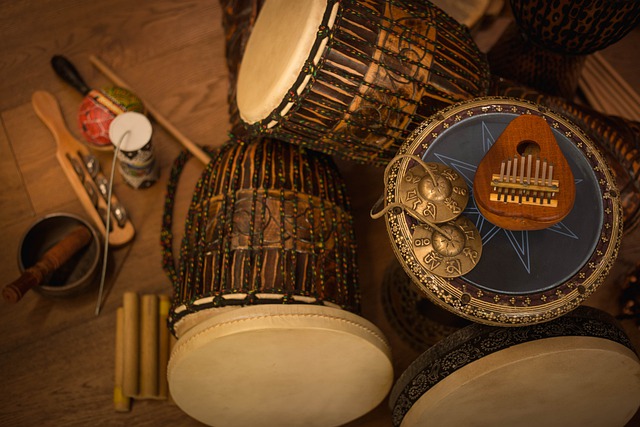Music, an expressive and universal language, has long been an essential facet of human culture. It can evoke profound emotions, recount stories, and serve as a medium for social cohesion. While many instruments have their roles in orchestrating melodies, percussion instruments like drums, kalimba, and others hold a special place in channeling creativity and art inspiration. This article delves into how these rhythm-centric instruments can be wellsprings of artistic expression.
1. The Ancient Drum: Communicating Stories and Emotions
Drums, perhaps one of the oldest musical instruments known to humanity, have been used for millennia for communication, ritualistic practices, and art. The rhythm, which is the heart of any musical piece, is driven primarily by drums. The varied intensities, beats, and patterns enable a drummer to express a wide range of emotions, from the fervor of battle to the serenity of a lullaby.
In many cultures, drums aren’t just instruments; they are storytellers, recounting tales of valor, love, despair, and joy, giving voice to the shared experiences of the community.
2. Kalimba: Melodies that Touch the Soul
The Kalimba, or thumb piano, is an African percussion instrument known for its melodious and harmonic tunes. Unlike many other percussion instruments that rely heavily on rhythm, the kalimba combines rhythm with melody, creating a uniquely expressive soundscape. Each pluck of a tine resonates with an emotion, creating compositions that tell tales of nature, life, and the human experience. The kalimba stands as a testament to how innovation in percussion can lead to beautifully balanced melodic and rhythmic expressions.
3. Percussion Instruments: Catalysts for Group Creativity
Another beauty of percussion instruments lies in their ability to foster group creativity. Instruments like bongos, congas, and djembes are often played in groups, leading to collaborative compositions. Such interactions not only produce rich sonic textures but also promote a sense of unity and shared creativity among players.
4. A World of Exploration and Innovation
The world of percussion is vast, with instruments from different cultures offering unique sounds. The Cajón from Peru, the Tabla from India, or the Taiko drums from Japan—each introduces an array of rhythms and timbres that inspire artists to explore and innovate. This global variety provides endless opportunities for musicians to experiment, blend styles, and create transcendent compositions.
5. The Healing Rhythms
Recent studies have illuminated the therapeutic value of drumming and other percussive practices. Drum circles, for instance, have been used as therapeutic interventions, helping individuals express buried emotions, alleviate stress, and even improve certain neurological functions. It’s an art form that transcends mere musical expression, reaching realms of holistic well-being.
Conclusion
Percussion instruments, from the humble drum to the intricate kalimba, are more than just tools for producing sound. They are carriers of culture, channels of creativity, and, most importantly, vessels of human emotion and experience. The rhythmic heartbeats they produce inspire artists, unite communities, and remind us of the deeply intertwined relationship between music, creativity, and the human soul.

